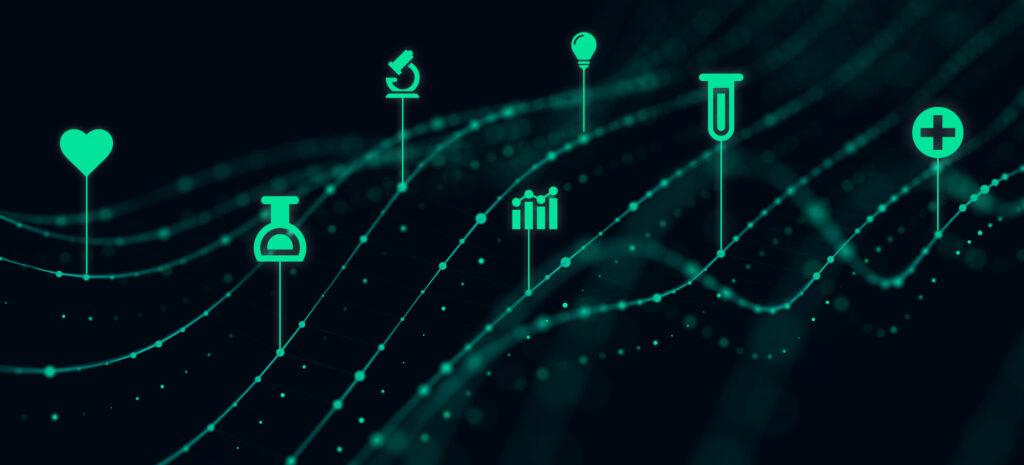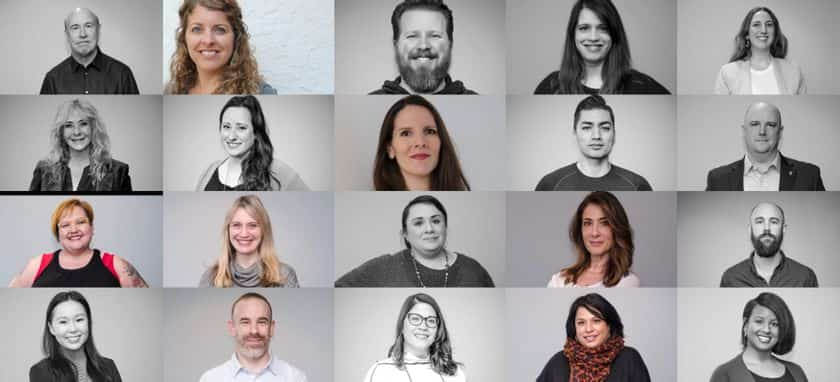In most pharma engagements, the focus is on traditional KOLs – prominent physicians with hefty publication credentials. But teams are increasingly aware of the value added by other types of healthcare providers, including nurses, technicians, pharmacists, and other allied health professionals.
In our latest podcast, Kristin Kaderli, senior director and client strategy lead at Within3, shares the benefits of engaging these experts within an insights management platform, including increased diversity of perspectives and more nuanced insight into the patient experience.
For pharma teams that want to improve outreach to allied health audiences, Kaderli suggests creating a standing panel of allied health experts to provide quick feedback on materials, guidelines, and protocols. Or, consider engaging with trade groups for nurses, pharmacists, and other professionals. These groups can offer a platform for dialogue and collaboration, helping to gather insights from a wider range of professionals.
To get more actionable recommendations, listen to the podcast or review the transcript below.
PODCAST TRANSCRIPT: WITHIN3 QUESTIONS WITH KRISTIN KADERLI
Within3
Welcome to Within3 Questions, a podcast where we ask one interesting person three interesting questions about life, science, technology, and insights. I’m your host, Sarah, and today our guest is Kristen Kaderli, senior director and client strategy lead at Within3. Welcome, Kristen.
Kristin Kaderli
Hi, Sarah. Good to be here.
Within3
Thanks for joining me today. In your work as a client strategy lead here at Within3, you work directly with our customers and help them reach their goals, specifically in the context of our platform, but in the broader context of their objectives for their organization. And when we chatted ahead of this podcast, when we were planning, you had brought up the importance of engaging health professionals outside of the traditional KOL, what we think of as a physician. And a lot of clients also engage with professionals outside that narrow definition. So allied health professionals, nurses, PAs, nurse practitioners, technicians, nutritionists, pharmacists, researchers, all of these people are a rich source of valuable insight into diagnosis and care and treatment of patients. We thought it would be a good idea to talk about that, discuss the value of engaging these professionals and how pharma teams can and showed approach doing this. So to jump right in with our first question, what are some ways that Allied Health professionals can contribute their unique insight and, and how might their experiences impact what pharma teams are working on?
Kristin Kaderli
Sure. I’m thinking specifically about a multi-pronged advisory board. I recently supported with one of my clients. And there are, are a lot of moving parts when you’re treating a cancer patient with multiple therapies, right? What are the ramp-up times, what’s the education around it? Writing the orders, who is actually completing and executing the orders? Who’s actually counseling the patient, who’s following up with different labs and making sure that the patients are okay to go home for the day? Who’s scheduling all of this? So in this example, what happened was the client ran concurrent advisory boards, and they actually did bring all these people together at one point, but in one, in one environment, they were getting feedback directly from the KOLs, the top people in their field. And then in another environment they were engaging with allied health professionals who actually are on the ground working with the patients, administering these therapies, right?
So there’s just so many moving parts there. So they were surveying these different allied health professionals on their role within the treatment. And then, what are some of the boundaries? What are the things that works? What are the protocols or guidelines that your particular clinic are abiding by, to get patients treated and on their way? So it’s really important, right? You can have a hematologist write this prescription and that’s the way you’re gonna go, but that where the barber meets the road is the allied health professionals really come into play in actually getting these patients treated, and taken care of properly.
Within3
I know that one example that we often share is a client that was designing a trial protocol, and they actually engage nurses, they engage them alongside the doctors, but in a separate room so that the nurses could speak freely to their experience and they didn’t feel like they were talking over the physicians. Is that something that can be part of that value where people feel more comfortable speaking up in an environment that’s virtual?
Kristin Kaderli
Yeah, of course. Allowing those allied health professionals to express themselves and really get into the challenges they face with different patients, whether they’re in a rural area or in a city in a, in a big university hospital setting or a rural clinic allowing them to sort of go down those rabbit holes of challenges without worrying about what the, what the physician is thinking because they really do make the magic happen once the prescription is written and, and the course of treatment is, is decided. The interesting thing is, Sarah, that in this particular example, there were like four to six more pages of transcripts from the allied health professionals and there were from the actual KOLs. So they wanna be heard on these topics. They wanna let the pharmaceutical companies know where their challenges are. And in response, those companies are really taking that, that feedback to heart and creating educational pieces around it, helping create guidelines for different clinic settings, whether it’s a large, like I said, university hospital setting or a small rural clinic. So they are really important in that whole feedback loop in, in making sure that these, these really effective therapies are able to be administered correctly.
Within3
So earlier this year we did some industry research and we asked respondents who are, who are mainly medical affairs folks, if they felt they were getting feedback from, from all the critical stakeholders that they needed. And the majority, about 80% either said sometimes or no. And, and of those people who said they needed to hear more from different people, that some of the top groups they named were nurses or frontline treating physicians and other types, of healthcare professionals outside the typical KOL profile. Does that surprise you at all?
Kristin Kaderli
Certainly not. When you think about pharma companies, medical affairs groups and, and others, their budgets, all of the things they have to get accomplished in a year, they’re really focusing on those top KOLs, right? That’s where a huge advisory board can just take up so much time and energy for an entire year. So you have to get those people’s responses, right? You have to, and then it’s easier to sort of reprioritize or deprioritize getting those different allied health voices in the room, but they are, they are really mission critical at a certain point. And that’s why the synchronous route, , you’re not flying folks in for a live discussion, you can, what is a really great way to layer in those folks without, , schedule disruption on their end, minimal cost absent of travel and logistics and things like that. So it does not surprise me at all, and I do think that most teams are looking for ways to, to incorporate these discussions in a very efficient manner.
Within3
Give us some top recommendations for teams that may want to start engaging , groups like nurses or like pharmacists if they’re not already or how can they improve upon that should they engage them as we discussed separately or together? You, you spoke to an example where they did, did both. what are the top tips that you would recommend and tactics that they should use to get better insights?
Kristin Kaderli
Perhaps a standing panel of allied health professionals, helping them with their materials and different guidelines and, and protocols and getting their feedback on, , what they’re disseminating in the market is really advisable. And then of course, as far as the, the, the, the science and the data goes continuing to obviously engage with the KOL population as well as obviously important and, and always on the top of the list. But I definitely would recommend having a group that you can go to with these when you need feedback. Also, it might be a good idea to sort of engage with those industry trade groups, right? Like nurses and other allied health professional trade groups. So just from what I’ve seen in my experience with my different clients, it’s really important to represent a diverse, a diversity of settings, right?
I think I mentioned rural versus large diversity health system. Different allied health professionals are playing varied roles in different settings, right? So making sure that you’re considering all of the possible treatment settings that a patient might be treated in and then who is involved in those different settings. Like in some places the pharmacist does the lion’s share of the making sure that the, the dosing is, is correct based on the chart metrics and all that stuff to the nurses who are making sure that the, the patient’s doing well on their initial ramp up and making sure they’re going home with, with plenty of support and, and compliance education.
Within3
So I would imagine that when starting from the very beginning of the, the process when a company is designing a trial protocol, that they might want to really look at all those different touchpoints that a patient has. Have you found that to be the case?
Kristin Kaderli
Yeah, so I think this is really important in that diversity of setting aspect. In the last example I shared, depending on whether someone is in a rural or or city setting and being treated in a larger clinic versus rural satellite clinic is like, do we administer on Fridays? Can the patient be, do we administer after 12:00 PM , what are all the, the guidelines around that? How long does a patient have to be monitored? When do the labs have to be administered after, after they’ve received their dose and things like that. So definitely considering diversity of setting and all of those guideline developments and protocol developments and, , making sure that they apply to all settings. And, , if you don’t do that and you are running into more of these logistical barriers, then that prevents people from getting treatment, right? So it’s really just important to, to consider the full picture.
Within3
So when you’re working with, with clients, say a an internal team in medical affairs or commercial team or what have you, and, and they’re trying to get to a particular objective, do they usually have in mind these other audiences? Do you suggest that to them or do they have a pretty good idea already of who they wanna talk to?
Kristin Kaderli
So they typically have an idea of, of what they need to do? It’s just a question of accessing those healthcare professionals or do identifying them really. So we do do all that kind of discovery question asking around these, these, these sessions and around the objectives. And , if we find that we’re, there’s a major hole in who they’re, who they’re engaging or , an obvious missing, missing setting or something of that nature, we like to make those suggestions. But, , a again, these, these folks live and brief these treatment protocols and they’re generally speaking, aware of, of the barriers and are looking to looking to cover their bases.
Within3
Have you ever experienced a team really have an aha moment or unlock something they hadn’t expected?
Kristin Kaderli
Certainly, yeah. I guess in the case of the main example, I keep going back to ’cause A, it’s recent and B it was really comprehensive. It’s just, they were just so delighted by the amount of feedback they got. across folks when you’re trying to develop a holistic protocol or guidelines or understand challenges, hearing from every single person that you’ve invited to the table is really important. And, and so in this concurrent example of concurrent advisory board with the Allied HCPs and the KOLs, they heard on every single question they ask from every single participant, and then they, that’s when the work really starts, right? But I do think in cases like this, when you’re in trying to ensure equitable and, and ready access to all these kinds of therapies, and you are doing the work to engage the folks that are actually administering the treatment, , once, once the patient has a diagnosis and is seeing the oncologist or hematologists and so forth, , getting that full breadth of feedback is just really important. And I think clients definitely see the value in that once we run one of these engagements.
Within3
Well, we’ve had a pretty wide ranging discussion and I think it’s so interesting to think about not just the diversity of the types of professionals that you engage, but the types of settings as you mentioned, that they’re working in, the different types of patient concerns that they’re seeing and how those really impact, , business decisions that factor into to treatment and access. Any final words to add any thoughts about tactics that, that medical affairs teams or other teams could use to start getting these more holistic insights?
Kristin Kaderli
Yeah, I just think the way you frame that, Sarah just made me really realize the importance of, there’s obviously several points along the continuum where you engage KOLs or certain, , health professionals and there’s that early part where you have the data you need feedback on, how is this gonna change protocols, et cetera. And then there’s really that second part, once you have approval and, and the, , you’re in the market treating patients, it’s like how do you really make sure that everybody gets what they need, where they need it, and how they need it, , to, to improve their quality of life or overall survival and things of that nature. So there are just so many, so many points along the way where you can engage around these things and, and engaging the right people and the right, right practitioners at the right time is really important. Kristen,
Within3
Thank you for joining me today. It was great to have you on this episode of the podcast. And thanks to everybody listening as well.
Join us again soon for another episode of Within3 Questions. And until then, you can visit us at within3.com or follow us on Twitter or LinkedIn. Bye for now.






